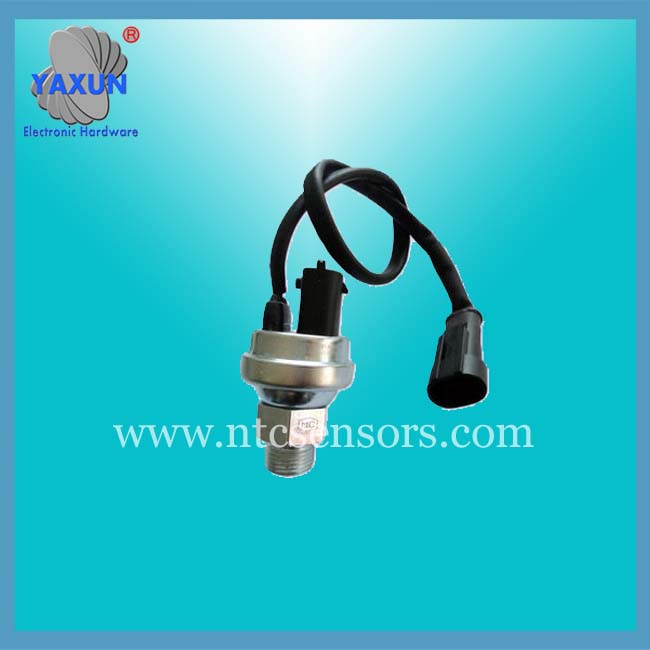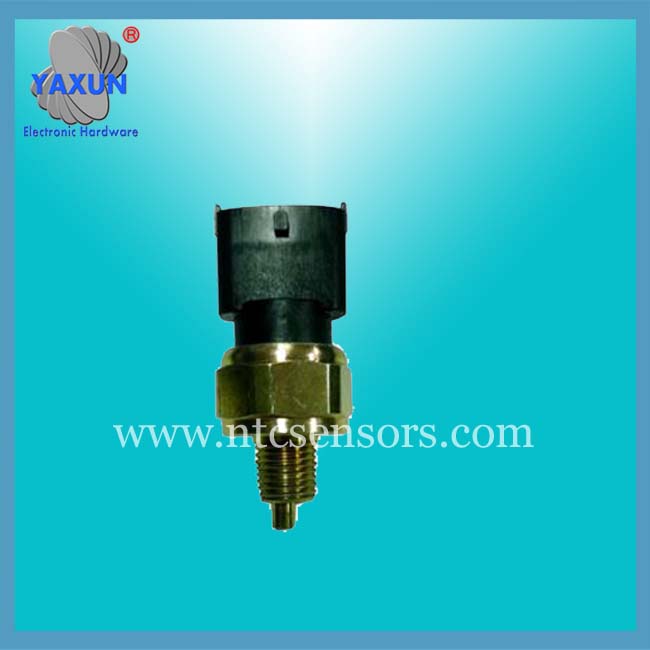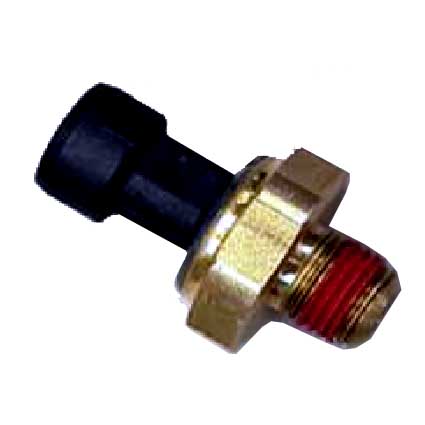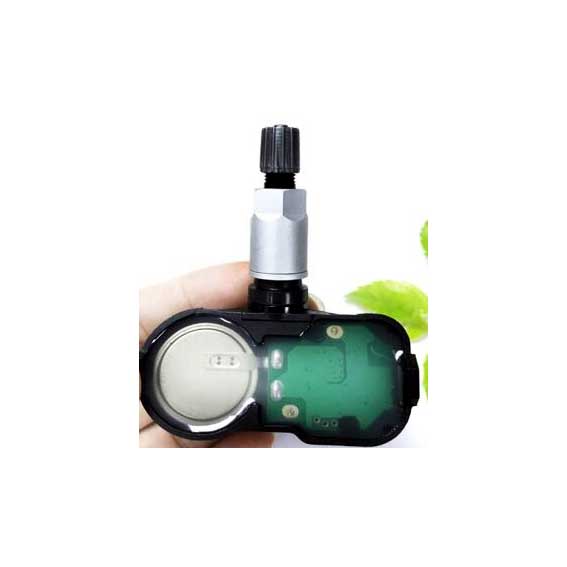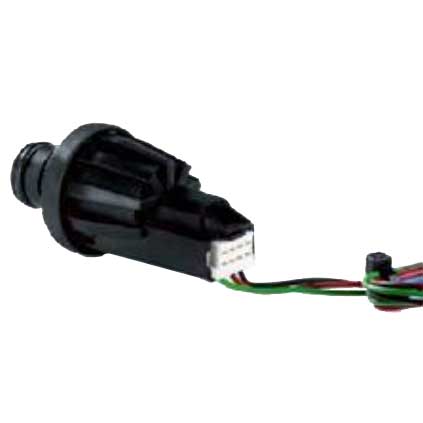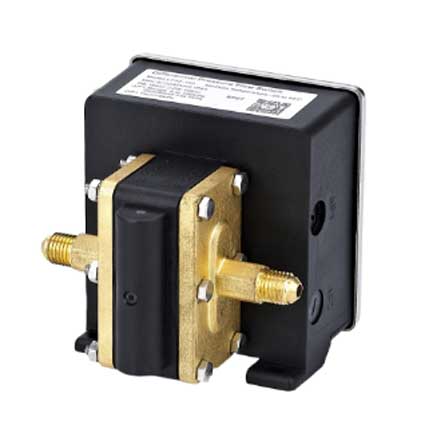Manufacturer of precision water pressure sensors
- PRODUCT DETAIL
What is a water pressure sensor?
Water pressure sensor is a pressure sensor that is more commonly used in industrial practice. It is widely used in various industrial dynamic environments, water conservancy and hydropower projects, transportation and construction equipment, production control systems, aerospace technology, ship technology, pipelines and other areas.

Introduction of water pressure sensor
The national standard GB7665-87 defines the sensor as: "A device or device that can sense a specified measurement and convert it into a usable signal according to a certain rule, usually consisting of sensitive elements and conversion elements." The water pressure sensor is a detection device that can sense the measured information, and can transform the detected information into electrical signals or other required forms of information output according to a certain rule. To meet the requirements of information transmission, processing, storage, display, recording and control. It is the primary link to achieve automated detection and control.
How water pressure sensors work
The core of the water pressure sensor is usually made of diffused silicon. The working principle is that the pressure of the measured water pressure directly acts on the diaphragm of the sensor, causing the diaphragm to generate a micro displacement proportional to the water pressure, and the resistance value of the sensor changes. He and the electronic circuit detect this change and convert and output a standard measurement signal corresponding to the pressure.
Static characteristics
The static characteristic of a sensor refers to the relationship between the output and the input of a sensor with respect to a static input signal. Because the input and output are independent of time. So the relationship between them, that is, the static characteristics of the sensor can be an algebraic equation without time variables, or the input amount as the abscissa. The characteristic curve drawn with the corresponding output as the ordinate is described. The main parameters that characterize the static characteristics of the sensor are: linearity, sensitivity, hysteresis, repeatability, drift, etc.
(1) Linearity: Refers to the degree to which the actual relationship curve between the sensor output and the input deviates from the fitted straight line. It is defined as the ratio of the maximum deviation between the actual characteristic curve and the fitted straight line to the full-scale output value in the full-scale range.
(2) Sensitivity: Sensitivity is an important indicator of the static characteristics of the sensor. It is defined as the ratio of the increase in output to the corresponding increase in input that caused the increase. Let S be the sensitivity.
(3) Hysteresis: When the input quantity changes from small to large (positive stroke) and the input quantity changes from large to small (reverse stroke), the phenomenon that the input and output characteristic curves do not coincide becomes hysteresis. For input signals of the same size, the positive and negative stroke output signals of the sensors are not equal in size. This difference is called the hysteresis difference.
(4) Repeatability: Repeatability refers to the degree of inconsistency of the obtained characteristic curve when the input volume changes continuously in the same direction for multiple times in the same range.
(5) Drift:
The drift of a sensor means that the output of the sensor changes with time when the input amount is constant. This phenomenon is called drift. There are two reasons for this drift:
First, the sensor's own structural parameters;
The second is the surrounding environment (such as temperature and humidity).
Dynamic characteristics
The so-called dynamic characteristics refer to the characteristics of the output of a sensor when its input changes. In actual work, the dynamic characteristics of a sensor are often expressed by its response to certain standard input signals. This is because the response of the sensor to the standard input signal is easily obtained experimentally. And there is a certain relationship between its response to a standard input signal and its response to an arbitrary input signal, and the latter can often be inferred by knowing the former. The most commonly used standard input signals are step signals and sinusoidal signals, so the dynamic characteristics of sensors are often expressed by step response and frequency response.
Technical parameters of water pressure sensing
Measuring range: -0.1 ~ 0 ~ 1 ~ 150 (MPa)
Comprehensive accuracy: 0.1% FS, 0.25% FS, 0.5% FS
Output signal: 4-20mA (two-wire system), 0-5V, 1-5V, 0-10V (three-wire system), RS485 (digital signal)
Power supply voltage: 24VDC (9 ~ 36VDC)
Medium temperature: -20 ~ 85 ℃ (normal temperature type) -20 ~ 200 ℃ (medium temperature type) -20 ~ 600 ℃ (high temperature type)
Ambient temperature: normal temperature (-20 ~ 85 ℃)
Zero temperature drift: ≤ ± 0.05% FS ℃
Range temperature drift: ≤ ± 0.05% FS ℃
Compensation temperature: 0 ~ 70 ℃
Safety overload: 150% FS
Ultimate overload: 200% FS
Response time: 5 mS (up to 90% FS)
Load resistance: current output type: maximum 800Ω; voltage output type: greater than 5KΩ
Insulation resistance: more than 2000MΩ (100VDC)
Sealing grade: IP65
Long-term stable performance: 0.1% FS / year
Vibration effect: within the mechanical vibration frequency of 20Hz ~ 1000Hz, the output change is less than 0.1% FS
Electrical interface (signal interface): Hessman connector + four-core shielded wire
Mechanical connection (thread interface): M20 × 1.5, etc. Other threads can be designed according to customer requirements
Water pressure sensor is a pressure sensor that is more commonly used in industrial practice. It is widely used in various industrial dynamic environments, water conservancy and hydropower projects, transportation and construction equipment, production control systems, aerospace technology, ship technology, pipelines and other areas.

Introduction of water pressure sensor
The national standard GB7665-87 defines the sensor as: "A device or device that can sense a specified measurement and convert it into a usable signal according to a certain rule, usually consisting of sensitive elements and conversion elements." The water pressure sensor is a detection device that can sense the measured information, and can transform the detected information into electrical signals or other required forms of information output according to a certain rule. To meet the requirements of information transmission, processing, storage, display, recording and control. It is the primary link to achieve automated detection and control.
How water pressure sensors work
The core of the water pressure sensor is usually made of diffused silicon. The working principle is that the pressure of the measured water pressure directly acts on the diaphragm of the sensor, causing the diaphragm to generate a micro displacement proportional to the water pressure, and the resistance value of the sensor changes. He and the electronic circuit detect this change and convert and output a standard measurement signal corresponding to the pressure.
Static characteristics
The static characteristic of a sensor refers to the relationship between the output and the input of a sensor with respect to a static input signal. Because the input and output are independent of time. So the relationship between them, that is, the static characteristics of the sensor can be an algebraic equation without time variables, or the input amount as the abscissa. The characteristic curve drawn with the corresponding output as the ordinate is described. The main parameters that characterize the static characteristics of the sensor are: linearity, sensitivity, hysteresis, repeatability, drift, etc.
(1) Linearity: Refers to the degree to which the actual relationship curve between the sensor output and the input deviates from the fitted straight line. It is defined as the ratio of the maximum deviation between the actual characteristic curve and the fitted straight line to the full-scale output value in the full-scale range.
(2) Sensitivity: Sensitivity is an important indicator of the static characteristics of the sensor. It is defined as the ratio of the increase in output to the corresponding increase in input that caused the increase. Let S be the sensitivity.
(3) Hysteresis: When the input quantity changes from small to large (positive stroke) and the input quantity changes from large to small (reverse stroke), the phenomenon that the input and output characteristic curves do not coincide becomes hysteresis. For input signals of the same size, the positive and negative stroke output signals of the sensors are not equal in size. This difference is called the hysteresis difference.
(4) Repeatability: Repeatability refers to the degree of inconsistency of the obtained characteristic curve when the input volume changes continuously in the same direction for multiple times in the same range.
(5) Drift:
The drift of a sensor means that the output of the sensor changes with time when the input amount is constant. This phenomenon is called drift. There are two reasons for this drift:
First, the sensor's own structural parameters;
The second is the surrounding environment (such as temperature and humidity).
Dynamic characteristics
The so-called dynamic characteristics refer to the characteristics of the output of a sensor when its input changes. In actual work, the dynamic characteristics of a sensor are often expressed by its response to certain standard input signals. This is because the response of the sensor to the standard input signal is easily obtained experimentally. And there is a certain relationship between its response to a standard input signal and its response to an arbitrary input signal, and the latter can often be inferred by knowing the former. The most commonly used standard input signals are step signals and sinusoidal signals, so the dynamic characteristics of sensors are often expressed by step response and frequency response.
Technical parameters of water pressure sensing
Measuring range: -0.1 ~ 0 ~ 1 ~ 150 (MPa)
Comprehensive accuracy: 0.1% FS, 0.25% FS, 0.5% FS
Output signal: 4-20mA (two-wire system), 0-5V, 1-5V, 0-10V (three-wire system), RS485 (digital signal)
Power supply voltage: 24VDC (9 ~ 36VDC)
Medium temperature: -20 ~ 85 ℃ (normal temperature type) -20 ~ 200 ℃ (medium temperature type) -20 ~ 600 ℃ (high temperature type)
Ambient temperature: normal temperature (-20 ~ 85 ℃)
Zero temperature drift: ≤ ± 0.05% FS ℃
Range temperature drift: ≤ ± 0.05% FS ℃
Compensation temperature: 0 ~ 70 ℃
Safety overload: 150% FS
Ultimate overload: 200% FS
Response time: 5 mS (up to 90% FS)
Load resistance: current output type: maximum 800Ω; voltage output type: greater than 5KΩ
Insulation resistance: more than 2000MΩ (100VDC)
Sealing grade: IP65
Long-term stable performance: 0.1% FS / year
Vibration effect: within the mechanical vibration frequency of 20Hz ~ 1000Hz, the output change is less than 0.1% FS
Electrical interface (signal interface): Hessman connector + four-core shielded wire
Mechanical connection (thread interface): M20 × 1.5, etc. Other threads can be designed according to customer requirements

